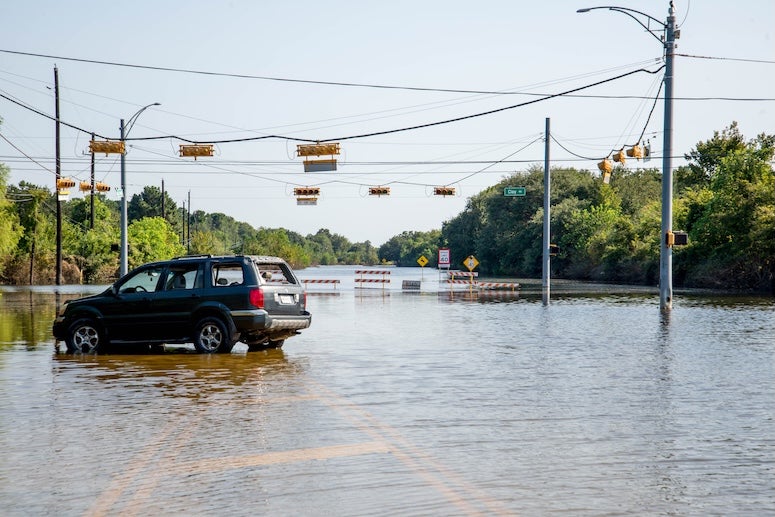Flooding remains the most destructive natural hazard in the United States, costing billions in damages annually, disrupting critical infrastructure and endangering lives. While urban areas often have access to substantial resources to tackle these challenges, rural communities face persistent barriers in mitigating flood risks. Recognizing these issues, Avantika Gori, an assistant professor of civil and environmental engineering at Rice University, is leading an innovative project to close the gap. Together with Rice’s James Doss-Gollin, Andrew Juan at Texas A&M University and Keri Stephens at University of Texas at Austin, the team was recently awarded a National Science Foundation (NSF) grant under the CHIRRP program (Confronting Hazards, Impacts and Risks for a Resilient Planet).
The proposed work introduces a stakeholder-centered framework to reform flood management for rural Texas communities. The project brings together researchers from Rice’s Severe Storm Prediction, Education and Evacuation from Disasters Center and Ken Kennedy Institute, Texas A&M’s Institute for A Disaster Resilient Texas and the Technology & Information Policy Institute at UT Austin.
“Our goal is to create a flood management approach that truly serves rural communities — one that’s driven by science but centers around the people who are impacted the most,” Gori said.

Rural communities face distinct and persistent challenges in managing flood risk, Gori explained. First, flood hazards are often inaccurately delineated in these areas, making it difficult for communities to secure state and federal funding for mitigation projects. This lack of support exacerbates and deepens the urban-rural divide. Second, traditional risk metrics focus primarily on dollar damages, which do not adequately address the needs of rural communities. Instead, these communities prioritize resilience indicators such as road and business disruptions, displacement and the functionality of critical facilities. Third, a fundamental disconnect exists between community priorities and state or federal flood management policies. Government agencies often focus on extreme flood events, while local communities are more concerned with addressing the small-to-moderate floods that occur more frequently.
The team’s project addresses these gaps by introducing a performance-based, system dynamics framework that integrates hydroclimate variability, hydrology, machine learning, community knowledge and feedbacks between the physical and social systems. This approach enhances understanding of flood risks while emphasizing long-term community resilience.
“By integrating understanding of the weather dynamics that cause extreme floods, physics-based models of flooding and AI or machine learning tools together with an understanding of each community’s needs and vulnerabilities, we can better predict how different interventions will reduce a community’s risk,” said Doss-Gollin, assistant professor of civil and environmental engineering.
The research will be implemented in two rural Texas communities grappling with persistent flood challenges. These case studies will demonstrate how linking global and regional hydroclimate variability with local hazard dynamics can create tailored, effective solutions. The project’s emphasis on collaboration ensures that community members are involved in every stage — from identifying priorities to implementing strategies.
This novel framework also incorporates resilience indicators such as business continuity, transportation access and functional critical facilities, ensuring that flood mitigation efforts benefit every aspect of rural life.
Beyond addressing flood risks in Texas, the project has broader implications for the future of flood-risk management across the U.S. By centering community needs and fostering partnerships among academia, local organizations and government agencies, the framework provides a blueprint for confronting climate change, aging infrastructure and population growth.
“This work is about more than flood science — it’s also about identifying ways to help communities understand flooding using words that reflect their values and priorities,” said Stephens. “We’re creating tools that empower communities to not only recover from disasters but to thrive long term.”
A key component of the project is public education. Efforts to strengthen scientific literacy, develop accessible training materials and prepare the next generation of leaders in convergent and transdisciplinary practices are central to its mission.
“We want to bring an Earth systems science approach to bear on solutions-oriented research,” said Juan. “Ultimately, we’re training the next generation of experts while equipping rural communities with the knowledge and capacity to address recurring floods now and in the future.”

